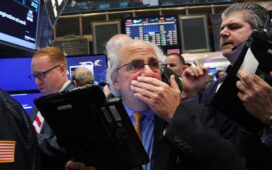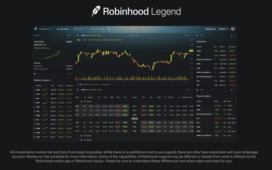Table of Contents
Show more
Show less
Marks and Spencer Group PLC is food, clothes and home products retailer. Its principal divisions are Clothing & Home, Food, International, and Ocado Retail.
The international division consists of M&S-owned businesses in Europe and Asia plus international franchise operations. Ocado Retail is a joint venture with Ocado combining the M&S brand with delivering goods to customers at home.
However, the past success of M&S is no indicator of future performance and anyone thinking about investing should consider researching the company more thoroughly to better understand its potential benefits and risks.
Investing puts your capital at risk, and investors should be prepared to lose some or all of their investment.
How to buy M&S shares
With this in mind, and once you’ve satisfied yourself regarding the reasons for buying shares in a particular company, there are several steps to take:
1) Open an account
Whether you’re a seasoned trader or new to stock market-based investments, if you want to buy shares in M&S you’ll need to open an account with a broker.
Stockbroking is competitive and services for DIY investors range from online investing platforms to investment trading apps.
Before opening an account, remember it is important to:
- Keep your ultimate financial goals in mind
- Be prepared to ride out stock market ups and downs
- Aim to keep trading costs to a minimum
- Keep in mind that share investing and trading can prompt tax charges.
Before buying any shares, ask yourself these questions:
- Should I take professional advice?
- Am I comfortable with the level of risk?
- What’s my investing budget?
- Can I afford to lose money?
- Do I understand the company in which I’m looking to invest?
- Am I protected if my platform provider/advisor goes out of business?
2) Know where M&S shares are traded
The stock market ticker for M&S is MKS. The company is traded on the London Stock Exchange, which is open Monday to Friday, 8am to 4.30pm. M&S is part of the FTSE 100 index of leading UK companies.
3) Do your research
To find out more about M&S, visit its investor relations page.
4) Decide your investment strategy
People tend to invest either with a lump sum or via smaller regular amounts.
The latter method is often referred to ‘pound cost averaging’, which may help you pay less per share on average over time. Rather than waiting to build up a lump sum, it means an investor’s money is put to use straight away.
5) Place an order
Once you’re ready to buy shares in M&S, log in to your investing account. Type in the ticker symbol M&S and the number of shares you want to buy, or the amount of money you want to invest.
6) Review M&S’s performance
Whether your share portfolio is full of companies or holds only a handful, we believe it’s vital you review how each component is performing on a regular basis: monthly, quarterly, annually, or whichever frequency is appropriate.
Doing this enables you to review performance and ask if any adjustments to your holdings are required.
Marks & Spencer share price
The graph below displays the past performance of Marks & Spencer. Past performance is not a reliable indicator of future results.
9 January 2025: Christmas trading results for 13 weeks to 28 December 2024 (Q3)
- Food sales at 2.6bn, up 8.9% on same period in 2023
- Clothing, Home & Beauty sales at £1.3bn, up 1.9% on a like-for-like basis
- Total UK and Republic of Ireland sales at £3.9bn, up 6.4% on a like-for-like basis, with International sales at £178m. Ocado retail results published separately by Ocado.
- Total Group sales at £4.06bn
How to sell M&S shares
If you want to sell your holdings, log in to your investing platform, enter the ticker symbol and select the amount you want to sell.
Note that if you’ve made a substantial profit, you may be liable to pay CGT when you sell your holdings, especially if your shares were held outside a tax-exempt wrapper such as an ISA.
The CGT tax-free allowance for the tax year 2024-25 is £3,000. Find out more about CGT, rates and allowances.
Tax treatment depends on one’s individual circumstances and may be subject to future change. The content of this article is provided for information purposes only and is not intended to be, nor does it constitute, any form of tax advice.
Why consider owning shares?
Before buying shares in any company ask yourself why you’re taking that decision. Does the company have potential prospects with a share price that could go from strength to strength?
Is there takeover talk that could potentially drive up a company’s share price?
Maybe the company you’ve identified is on a recovery mission and its share price is starting to recover from previous lows.
How to invest in M&S via a fund
Investing directly in shares can be an absorbing and, hopefully, profitable experience. It may also qualify you for shareholder perks specific to the company in question.
Investing directly in companies can, however, leave you more vulnerable to stock market volatility and unforeseen swings in share prices.
That’s why financial experts often recommend that most people invest in a diversified mix of asset classes and investment funds that hold ready-made portfolios of different company shares, often dozens or even hundreds at a time.
As a large UK multinational operation that’s part of the FTSE 100 index, M&S is found in many UK equity index tracker and exchange-traded funds.
Frequently Asked Questions (FAQs)
Does M&S pay a dividend?
Yes, M&S is expected to pay a dividend over the next 12 months.
As with any quoted company, past dividends do not guarantee future dividend payouts.
Can I buy M&S shares with a debit card?
Yes, in the sense that you’d need to add funds using a suitable card to an online investing service or app before making the share purchase from there.
What does it cost to trade M&S shares?
This will vary depending on the investment service/platform that an investor is using to trade.
Broadly speaking, there are three main types of fees. First is a share trading fee that investors are charged by a platform each time they buy or sell shares.
Note that some platforms charge no fee for this activity, while others may charge a flat fee of typically between £6 and £12.
Second comes the platform fee which is typically levied as an annual fee charged for holding shares on a particular investing platform. Again, some providers impose no fee, others charge a flat fee, and some services charge a percentage, typically 0.25% to.0.45% per annum of the underlying portfolio.
If you buy or sell shares denominated in a foreign currency, nearly all of the investing platforms charge a foreign exchange fee. Again, this will vary among providers, but tends to sit in a range from 0.5% to 1.5% per transaction.
Investments in a currency other than sterling are exposed to currency exchange risk. Currency exchange rates are constantly changing which may affect the value of the investment in sterling terms.
You could lose money in sterling even if the stock price rises in the currency of origin. Stocks listed on overseas exchanges may be subject to additional dealing and exchange rate charges, and may have other tax implications, and may not provide the same, or any, regulatory protection as in the UK.





